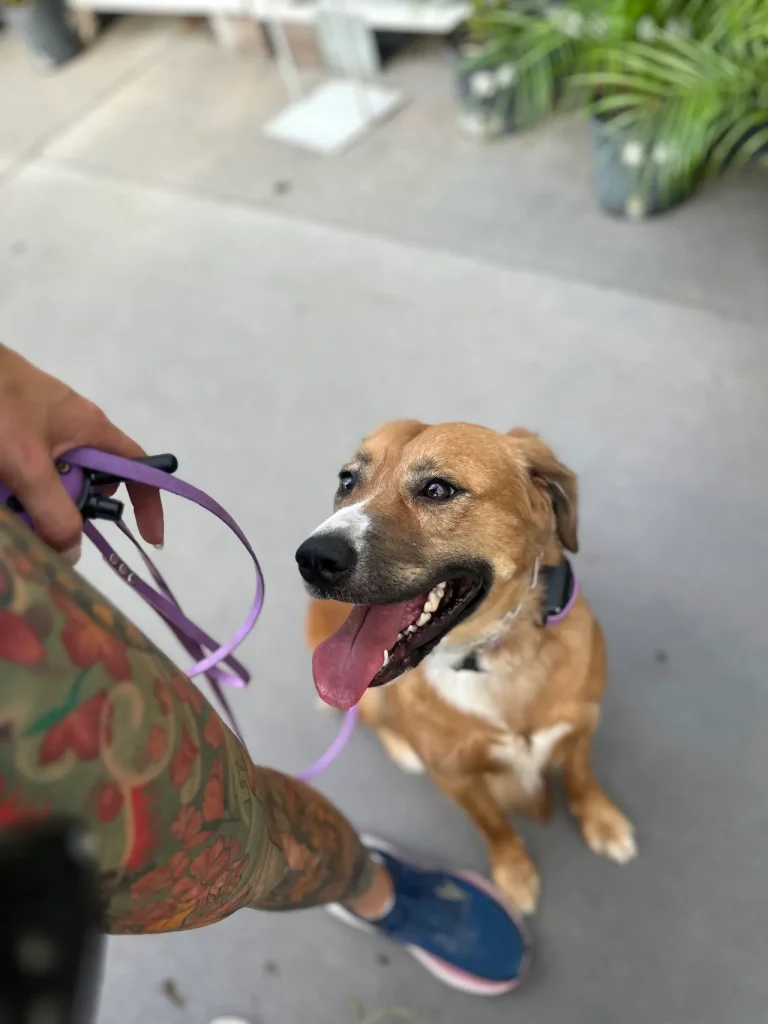How to Introduce Your Rescue Dog to Their New Home – 3-Week Guide!
Congratulations on your new rescue dog! Thank you for adopting, You’ve saved a life, and now it’s time to start building a beautiful bond with your new furry friend. The first days, weeks, and months will be all about settling in and adjusting, so let’s take it slow and steady. Setting boundaries right from the start will help create a harmonious household for everyone. Ready? Here’s a playful, 3-week schedule to guide you as you welcome your new pup!
First Things First: Homecoming Day!
When your rescue dog arrives, make sure to put up any other pets for now. Give your new dog a chance to explore their new environment without the added stress of immediate introductions. Remember, this is a big change for them, so it’s best to avoid any quick introductions that might lead to tension.
Pro Tip: Keep them on a leash with a martingale collar and give them a tour of the yard. Let them drag a long line around to help guide them, set boundaries, and ease into the transition. After a while, let them decompress in their crate. During this time, other pets can get a sniff, but let’s save face-to-face meetings for later!
Week 1: Establish Routines and Build Trust
Dogs thrive on routines, so now’s the time to establish a schedule. Set times for meals, walks, play, crate breaks, and outdoor time. Bond with your new dog by engaging in gentle play and walks, keeping them on a leash or long line in the house to prevent any mishaps on furniture or counters. Keep things chill and refrain from taking anything away from them just yet—this helps avoid potential issues like resource guarding.
Pro Tip: Give your new buddy space from other pets. No sharing furniture yet, and no forced interactions. Patience is key!
Week 2: Slow and Steady Pet Introductions
If everything’s going smoothly, it’s time to let the pets meet! Pick a quiet moment to introduce them outside on long leashes. Avoid toys, food, or anything that might trigger possessiveness. Let them sniff, explore, and become acquainted without forcing interaction.
Stick with the established crate and play schedule, and keep supervised interactions relaxed. Gradually allow some time together outside and indoors, but hold off on high-energy play until they’ve had a chance to bond calmly.
Week 3: Easing into Shared Spaces
Now that you’ve gotten to know your new dog’s personality, it’s time to try some free roaming with your other pet. Gradually introduce shared toys, meals, and furniture privileges (but only if you’re confident there won’t be any resource guarding). Crating is still useful, particularly if you’re unsure about leaving them unsupervised.
Pro Tip: Take note of any signs of possessiveness over resources. If you see any guarding behavior, remove furniture access for both dogs until they’ve learned to share nicely.
Final Thoughts: The Art of Patience
The goal here is not to rush the process. Many well-meaning owners hurry introductions, only to face issues like dog fights, resource guarding, or even escape attempts. Taking it slow will help you avoid these pitfalls and build a strong foundation for a happy, well-adjusted dog.
Your new rescue dog is learning what their new life will look like, and with a little patience, you’ll be on your way to a peaceful, loving home for everyone. Enjoy the journey!


